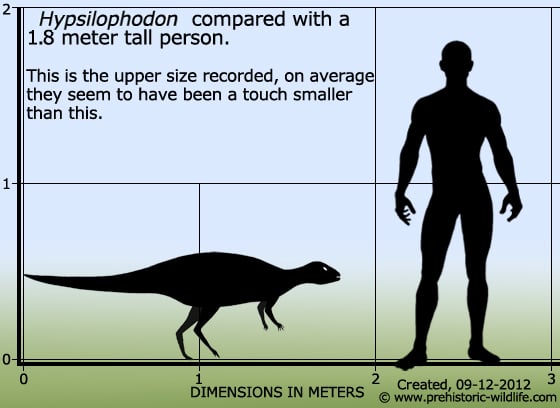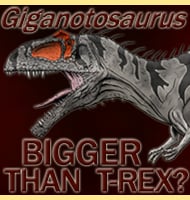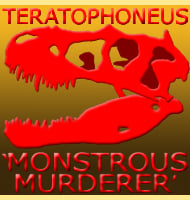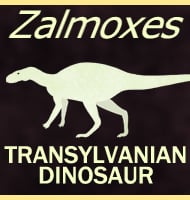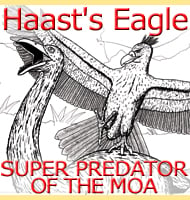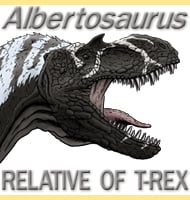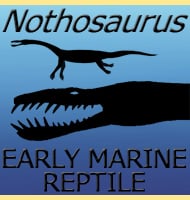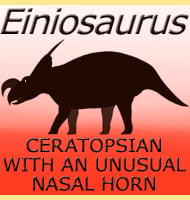In Depth
Hypsilophodon is one of the more famous dinosaurs that have been discovered in the Isle of Wight, however its discovery was delayed by the fact that for the first twenty years of the first fossils discovery, Hypsilophodon was actually believed to be a juvenile Iguanodon.
This is of course in reference to the Mantell-Bowerbank block, a collection of post cranial remains with no skull that was preserved flat on a block that was then broken in half and sent to two separate palaeontologists (today these two pieces are catalogued as NHM 28707, 39560-1).
Thomas Henry Huxley first came up with the notion that a new genus of dinosaur was present when they had the opportunity to study a new specimen, this time with a skull (NHM R197) in 1868, and in 1869 Huxley presented Hypsilophodon as a new genus in a lecture.
Just as Gideon Mantell named Iguanodon for the similarity of its teeth to the modern Iguana genus of lizard, Huxley named Hypsilophodon because its teeth were similar to another genus of lizard called Hypsilophus that was named in 1830.
However in a quirk of fate, Hypsilophus is today treated as a synonym to Iguana, which means that both Iguanodon and Hypsilophodon are actually named after the same genus of lizard.
The type species name H. foxii is named in honour of the Reverend William Fox who had discovered the 1868 specimen.
Like with so many other early genera of dinosaur including the aforementioned Iguanodon, Hypsilophodon seems to have been treated as something of a ‘wastebasket taxon’ where the fossils of superficially similar dinosaurs have been added to the genus.
Later studies in the late twentieth and early twenty-first centuries have now raised the consensus that only the Hypsilophodon fossils from the Isle of Wight, particularly the Hypsilophodon Bed of the Wessex Formation, are actually valid for the Genus.
This leads to the further conclusion that the other fossils once attributed to the genus from sites in Europe, mainland England to Even South Dakota in the United States, are actually those of similar but different dinosaur genera.
This also means that many facts presented about Hypsilophodon when these fossils were still attributed to the genus are also wrong, which means that today there are a wide range of details regarding things such as size and geographical and temporal distribution for Hypsilophodon, depending upon the source.
Discoveries and evaluation for the genus in the future may mean further revisions again, but for now it is safer to restrict study of the genus to the Wessex Formation fossils.
As a dinosaur Hypsilophodon is something of a paradox in that as an Early Cretaceous dinosaur genus it displayed a mix of evolutionary traits.
The fact that it had five fingers on the hands and four toes on the feet is taken to represent primitive characteristics, while the observation that the fifth finger was opposable to the other four is actually quite advanced.
It could be however that the five fingered, four toed form ‘just worked’ for its lifestyle, and so there were no need for any radical evolutionary changes.
Evolution after all is driven by necessity, and things are not necessary, then there is no drive for further changes to take place.
Overall Hypsilophodon seems to have been a runner. Its long hind legs and lightweight build have led to popular suggestion that in terms of form, Hypsilophodon might have been one of the fastest types of dinosaur.
This in turn could indicate that Hypsilophodon relied upon speed and agility to stay out of the mouths of predators.
In terms of posture Hypsilophodon would have almost certainly kept its spine horizontally level to the ground while running, something that would have been helped by the long tail which would have been kept rigid by a network of tendons and interlocking vertebrae so that it acted as a counterbalance to the head and body that was carried forward of the hips.
Hypsilophodon could have arched their necks and may even have been able to raise their upper bodies a little to look for danger. When feeding, Hypsilophodon may have also become semi-quadrupedal, balancing themselves on their forelimbs as they pitched down to feed upon low growing plants.
The overall small size and low height of Hypsilophodon meant that it was almost certainly restricted to feeding upon low growing vegetation.
The small area of the beak like anterior (front) portion of the mouth however meant that Hypsilophodon may have been more of a selective browser rather than a generalist of all plant parts/types.
Another primitive trait of Hypsilophodon is the fact that although it had a beak like mouth, it still retained teeth in the premaxilla.
This is considered primitive because most dinosaurs that developed beak like mouths would go on to lose all of the teeth in the anterior portion of the mouth.
It is uncertain as to exactly why Hypsilophodon retained these teeth, but they may have still served a purpose in feeding.
The teeth at the posterior (back) end of the mouth were broad and developed for shearing. The teeth in the lower jaw erupted at a slight angle away from the mouth, while those of the upper jaw were angled slightly inwards.
This provided Hypsilophodon with a broad shearing edge that would have effectively processed tougher food such as newly erupted shoots which when newly grown are tightly and firmly packed together, to possibly even exposed roots.
To help with this food processing, Hypsilophodon is also thought to have had cheeks so that food could be held in place as it was sheared between the rear teeth, as well as being prevented from falling out of the sides of the mouth as it did so.
Hypsilophodon was at one time thought to have had armoured plates that ran down it back, something that once accredited the genus with the title of the only armoured ornithopod (not to be confused with ‘ornithischian’) dinosaur.
This idea stems all the way back to 1874 when a bony plate was identified as being located on the neck by J. W. Hulke. This led to speculation that such plates ran all the way down the back in a kind of mail that prevented the teeth of predators from puncturing through.
However the idea was discredited in 2008 in a study by Butler and Galton who interpreted the dermal armour as actually being an intercostal plate from the rib cage that had originally been made of cartilage.
Plates like these have also been recorded as being preserved with other dinosaur genera, and with this in mind, Hypsilophodon likely still relied upon evasion tactics such as speed to avoid predators.
Another famous dinosaur from the Wessex Formation which Hypsilophodon could have possibly lived alongside is the armoured ornithischian Polacanthus.
Possible predators of Hypsilophodon include the tyrannosauroid Eotyrannus, neovenatorid Neovenator as well as the spinosaurid Baryonyx.
Baryonyx for its part is so far only represented by teeth in this formation (which may or may not belong to a tooth taxon called Suchosaurus), but it’s known fossil distribution stretches all the way from Southern England to Portugal, so it’s likely that at some point it crossed over what is now the Isle of Wight.
Also although perceived as a specialist piscivore (fish hunter), Baryonyx is also a known dinosaur eater, and a small ornithopod like Hypsilophodon could have been easily killed and consumed by a Baryonyx if it were able to catch one.
Further Reading
- - On Hypsilophodon foxii, a new dinosaurian from the Wealden of the Isle of Wight. - Thomas Henry Huxley - 1870.
- - Supplemental note on the anatomy of Hypsilophodon foxii, J. W. Hulke – 1874
- - The ‘dermal armour’ of the ornithopod dinosaur Hypsilophodon from the Wealden (Early Cretaceous: Barremian) of the Isle of Wight: a reappraisal. – Richard J. Butler & Peter M. Galton – 2008.
- - Notes on Neocomian (Lower Cretaceous) ornithopod dinosaurs from England - Hypsilophodon, Valdosaurus, “Camptosaurus”, “Iguanodon” - and referred specimens from Romania and elsewhere. - P. M. Galton - 2009.
- – A Cretaceous calamity? The Hypsilophodon Bed of the Isle of Wight, southern England. – Geology Today. 33 (2): 66–70. – Robert A. Coram, Jonathan D. Radley & David M. Martill – 2017.
